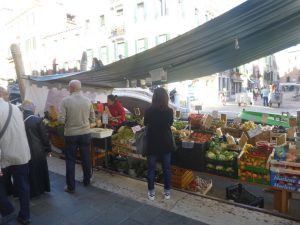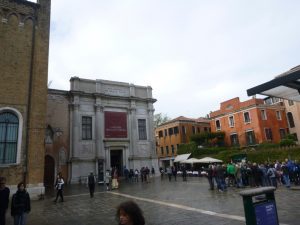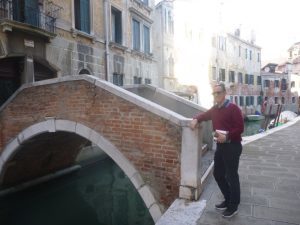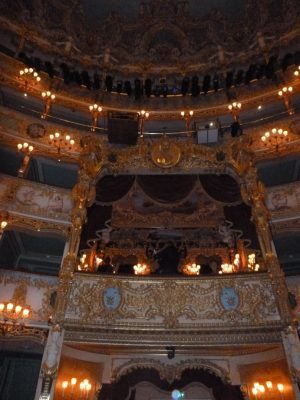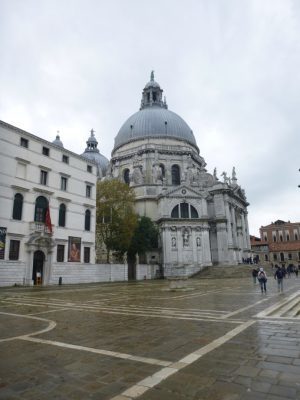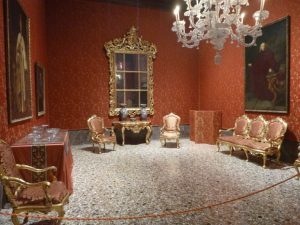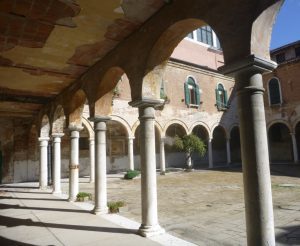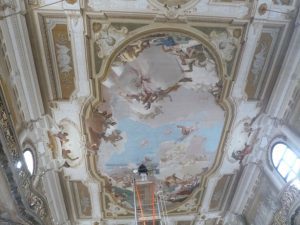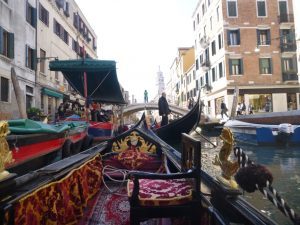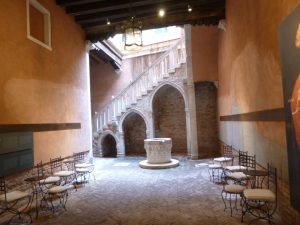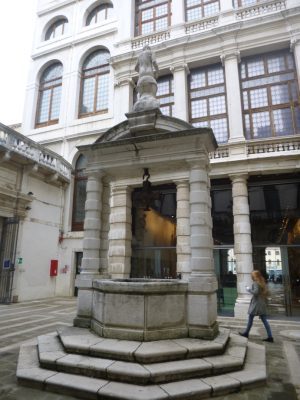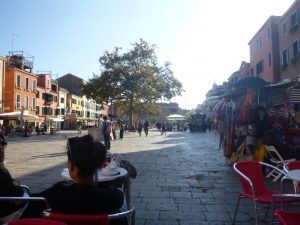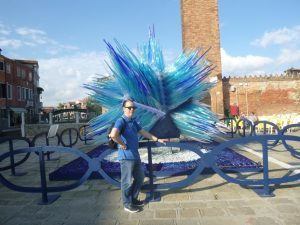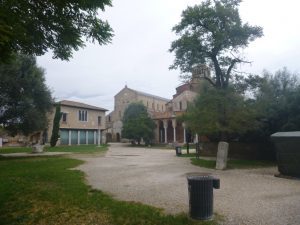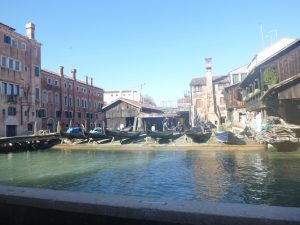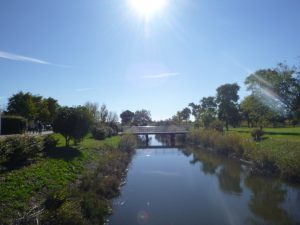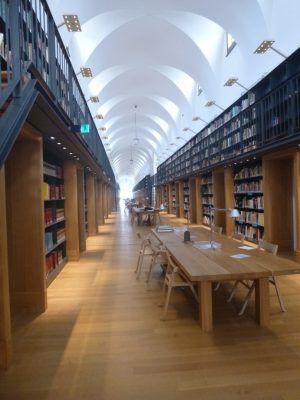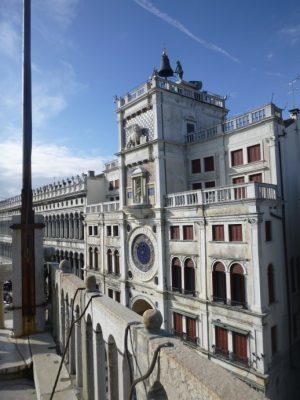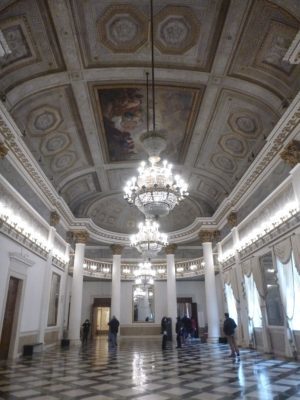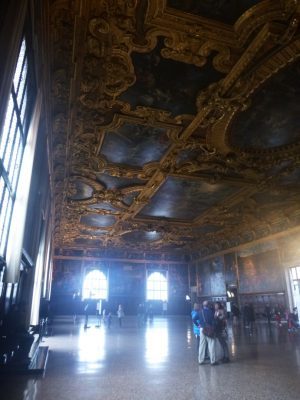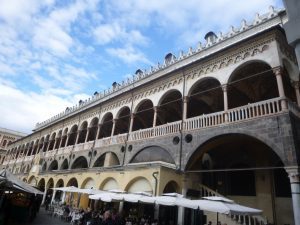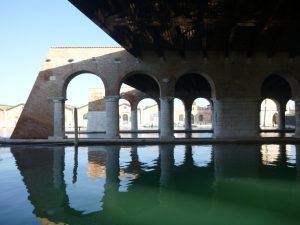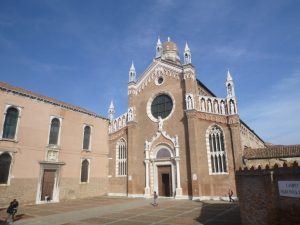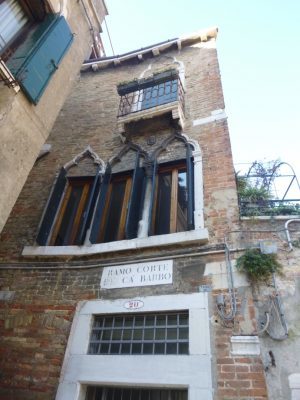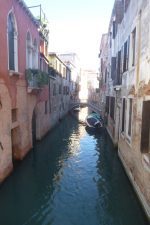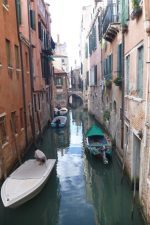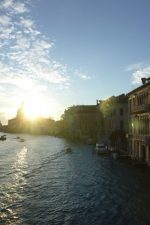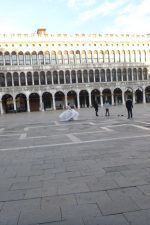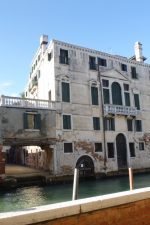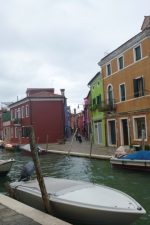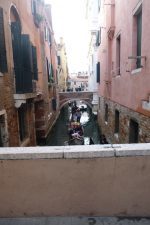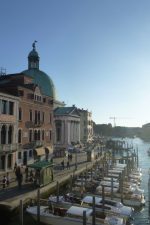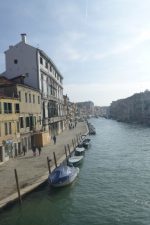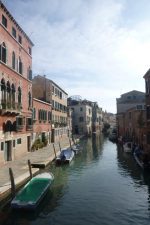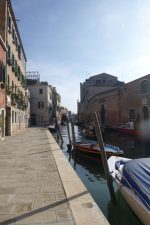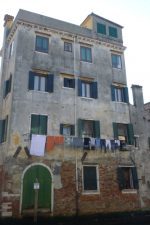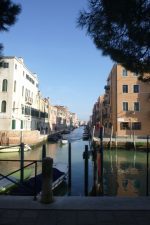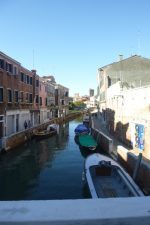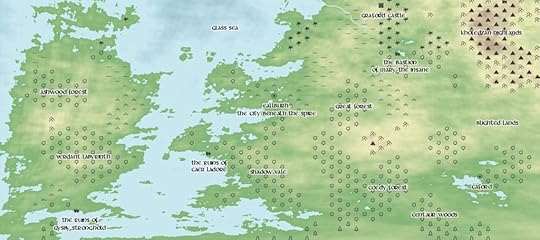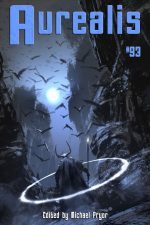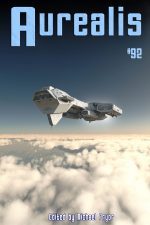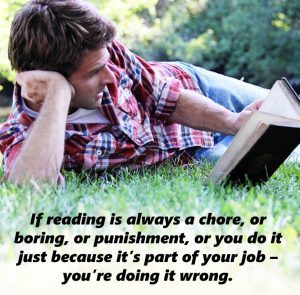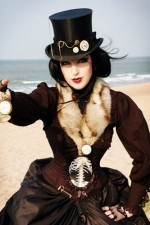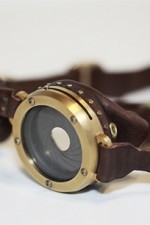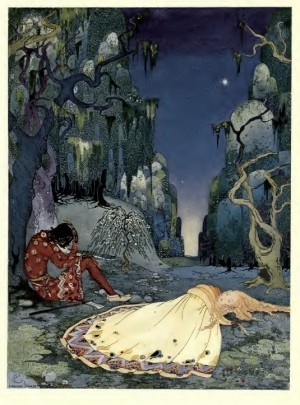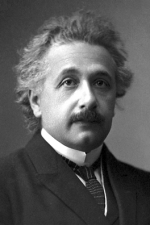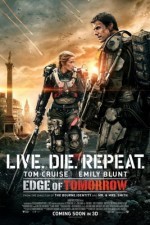Michael Pryor's Blog, page 9
December 2, 2016
Our Venice Trip
4th October – first full day in Venice
Yesterday (and the day before?) was the long, long trip. Two legs – Melbourne – Dubai, two hour wait, then Dubai Venice. Arrived in Venice at 3 o’clock and met by Georgia, our landlord, who walked us from Piazza Romana where our bus brought us, to our little flat in Campiello Mosca, a gorgeous, tiny square with an ever running water spout, just around the corner from the grand church of San Pantalon, the one with the awe-inspiring trompe-l’œil ceiling.
Slept for eleven hours, getting up at eight. Breakfast, we went around the corner to Tonolo, a recommended pasticceria, for bombe and coffee. Good stuff, very Italian.
Our local fruit and veggie sellers, St Barnaba.
After that, we walked to Campo San Margherita, on our landlord’s recommendation, for some fruit and grocery shopping. Then we walked down toward Accademia and eventually went right through Dorsoduro to see Giudecca across the water.
After lunch we did more wandering up to the station and Piazza Romana. Then we meandered toward the Rialto, finding good old Campo Silvestro and Locanda Armizo (where we stayed in 2004) along the way.
Four o’clockish we made our way back to our flat, and at six o’clock, the bells started ringing near and far. At least one set very close.
Dinner was at the Trattoria Dolfin. Good pasta and so so salmon main course.
Wednesday 5th October
Cooler today. Rather than the brilliant blue skies and 23 degrees of yesterday, today it was grey overcast, 16 degrees maximum – with a little rain.
We breakfasted in the flat with shop bought muesli and coffee, then went walking southward to the Accademia (Gallerie dell’Accademia). Fifteen minutes got us there, and we spent four hours admiring the best collection of Venetian art around – Bellini, Canaletto, Carpaccio, Giorgione, Lorenzo Lotto, Mantegna, Tiepolo, Tintoretto, Titian, Veronese Vasari, Leonardo da Vinci and plenty more.
The Gallerie dell’Accademia
Picked up panini for lunch at the flat, then in the afternoon we went meandering northwards, over the new bridge near the station and into Cannaregio and soon we were far away from the tourist part of Venice. Very quiet, very residential, narrow canals, fascinating to see this other side of the city. Very local, few tourists.
To get back home we had to go through the edge of San Marco and Rialto districts, and the crowds got thicker and thicker. We bought some veggies at the Rialto market and then made our way home via the Frari and the Scuola San Rocca.
Thursday 6th October
Breakfasted at the flat, then went to Scuola San Rocco, a ten minute walk away. One of the great confraternities, this is a sumptuous building featuring much work by Tintoretto. The board room and its ceiling were particularly impressive.
Lunch was panini back at the flat, then in the afternoon we walked up to San Polo and explored the church there before coming south and then to the great complex that is the Frari. Majestic and impressive. Good Titians.
I can spot a bridge in Venice.
We walked around after that in the lovely afternoon sun, north nearly to the station, and south nearly to the Accademia, just following our noses, noting possible places to eat and other sites of interest.
Had dinner at nearby Estro wine bar/restaurant. Very good. I had a Venetian fish platter to start, with some puzzling and challenging items on a plate, then we shared a fine porcini orzotto (pearl barley risotto). Excellent.
Friday 7th October
Went to the Venice Natural History Museum, which was a lovely boutique museum, lots of fossils, some old exhibits but mostly modernised and very presentable. Then we walked and walked, battling the crowds around the Rialto and near San Marco, to find to La Fenice. Found it, finally, then we had an extensive audio guided tour of this rococo gem.
The Imperial Box at La Fenice.
After that we had to find the supposedly nearby Goldoni Theatre to book for Merchant of Venice, but tickets weren’t on sale yet … From there we headed south to the Accademia bridge and then home, briefly, before popping over to Campo San Margherita and some late afternoon sun and vino. Very civilised and relaxed.
Saturday 8th October
Noticeably quieter in Campiello Mosca this Saturday morning. We dawdled a little over breakfast in the flat and then strode out through towards the Zattere and the Customs House (Dogana) right on the beginning of the Grand Canal. From there we could look toward Giudecca and across to San Marco, despite the drizzle.
Santa Maria Salute.
The Customs House has been turned into a modern art gallery with some pretentious installations, but it’s a magnificent old building with impressive brickwork and timbering. Next to it is the church of Santa Maria della Salute, the big domed one you see in every pic of the start of the Grand Canal. Went in and looked around (it’s actually more impressive outside than in), then wandered back through Dorsoduro, dropping in at San Sebastiano (the church with two fronts) to marvel at its Veronese masterpieces, and back to the flat before our night out at La Fenice.
La Traviata was a big production, modernised with sets, costumes. We were way up the top, but centre, in a mixed crowd from the well-dressed to the jeans and t-shirt brigade.
Afterwards, we walked to San Marco and it was much more manageable, even though it was a Saturday night. Stunning lights, stunning space.
Sunday 9th October
Stayed in a little, then walked through a sunny but chilly morning to Campo San Margherita for a sit down breakfast of coffee and croissants. Lots of dogs being walked everywhere we looked. Dachsunds seem to be the dog of choice in today’s Venice.
A recreated 18th century drawing room at Ca’ Mocenigo.
After brekkie, we headed north through Santa Croce to find Ca’ Mocenigo, one of the civic museums, this one concentrating on fabrics, textiles, clothing and perfume. A grand palazzo, of course, with many rooms set up in 17/18th century style with furnishings of the period. Very interesting, and it also had a history of perfume section, celebrating Venice’s connection with the perfume trade. Excellent stuff.
Lunch was a panini we grabbed and took back to the flat.
Afternoon was a bit of a rest, and then in the evening we went and had a delicious hamburger(!) at Estro, then off to San Rocco for a performance of Handel’s ‘Messiah’. Great venue, spirited performance on period instruments.
Monday 10th October
A big walking day. Early, we went down to the Accademia Bridge, across to San Marco, along the fondamenta to the Arsenale. We visited the Ships Pavilion there, a display of a number of different historical boats, from decorated gondolas to torpedo boats. Not bad, but a little underwhelming.
Cloisters, Sant’ Elena.
We then explored Castello and the eastern islands, right out to the edge of Sant’ Elena and its charming Venetian gothic church and cloisters.
We saw the Biennale site, some of the back edges of the Arsenale and the military complex, and the largest expanses of open parklands in Venice. Charming and sedate.
Home was the reverse – Castello, Arsenale, San Marco, Accademia. In the end, we’d walked 19 kilometres.
Tuesday 11th October
Long day. We organised a boat excursion from San Marco, across the lagoon and up the Brenta River/Canal to Padua. Along the way, we were shown the amazing villas that the Venetian nobility built in the 15th century and later. So many. We stopped at three – Villa Foscari (Malcontenta), Villa Widmann and Villa Pisani. The first was a Palladian gem, the second more baroque, and the third was huge – 114 rooms, almost like Versailles.
Tiepolo fresco under restoration, ballroom of Villa Pisani.
When we reached Padua, we waited for a bus back to Venice, getting home after seven. A long but fascinating day.
Wednesday 12th October
In the morning –very bright blue, a little cold but pleasant – we walked through Dorsoduro to the Peggy Guggenheim Gallery, the famous modern art collection. Nice place. Lots of Picassos, Pollocks, Dalis. Formidable.
Lunch was back at the flat. In the afternoon we visited the Scuola del Carmine and the Carmini Church, then had a lovely gondola ride around the back canals of Dorsoduro.
Gondola ride!
Dinner was at fancy Impronta. Modern and good.
Thursday 13th October
We have heat! Italian law stipulates that heating can’t be turned on until October 15, but it’s been unseasonably cold, they say, so they’ve relaxed restrictions.
In the morning, we went off to Ca’ Rezzonico on the Grand Canal, only ten minutes from our flat. It’s a museum of 18th century Venice, with many rooms set up to reflect the life of those times. Interesting furniture, paintings, frescoes, drapes, tapestries, many rescued from decaying and dilapidated houses in and around Venice. Very extensive, very grand.
In the afternoon, we went to visit Casa Goldoni, the museum dedicated to one of Venice’s favourite 18th century playwrights. Good costumes and puppets.
Ground floor, Goldoni house.
Dinner was funghi pasta at the flat.
Friday 14th October
Rain cascading down Rialto side steps.
Very wet day. Woke up to heavy rain, went to Tonolo for breakfast, but gave up on going to San Marco to look at the basilica. Stayed in flat all day while rain didn’t let up.
In evening, after dinner at flat, still raining, we trudged through flooded streets to Santa Maria della Pieta church for a Vivaldi concert. Driving rain, Rialto deluged, much water everywhere.
Saturday 15th October
Weather looked dicey in the morning, so set off fully equipped with wet weather gear to find the location of our opera in the palazzo tomorrow night, and to get tickets from the Goldoni Theatre for Merchant of Venice. So it was down to Accademia and across the bridge. Some missteps, but finally found both, and along the way found a Saturday market for old things at Campo San Maurizio. Didn’t buy anything, but interesting stuff to look at.
Then it was heading north to the Querini Stampalia, a terrific house museum, with some excellent furnishings, frescoes and art. Very good, with an interesting ground floor display about the wetlands lagoons.
Querini Stampalia was next to a major church, Santa Maria Formosa, so we went and had a look at that, too – another vast building, slightly asymmetrical inside. Impressive, again.
Santa Maria Formosa.
Lunch on the run, then northish to Cannaregio and the Scuola Grande di San Marco. Huge building, magnificent ceilings and a lovely boutique display of book facsimiles, including a Tres Riche Heures du Duc du Berry. The Scuole was next to the church of the Santi Giovanni e Paulo (San Zanipolo in the Venetian dialect), so we had a look at that one, too. Some gob-smacking marblework.
From there we went north to the Fondamenta Nuova from where we could see the cemetery island of San Michele and, further out, Murano.
Next was the church of the Gesuiti, a seventeenth century gem. Very ornate, and with a commendably baroque baldacchino.
After that, it was across the top of Cannaregio, over the bridge at the station, and home. 14 kilometres of walking, according to Google.
Dinner was at the local bar, Baba. Really good, unpretentious, fun place.
Sunday 16th October
Lots of bells this morning because of Sunday church. Up and about a little later than usual and, after breakfast at home, we went northwards to find Ca’ Pesaro, another civic museum. This was a huge building, but much of the baroque interior has been lost (apart from some excellent ceilings) and it’s been turned into a museum for the city’s collection of modern art. Nicely displayed, with a reasonable chronological approach.
We lunched at the museum, looking out over the Grand Canal. Serene.
Entrance to Ca’ Pesaro.
Ca’ Pesaro also has a very large oriental collection, gathered by a Venetian aristo in the 19th century. Lots of weapons, ceramics, fabrics, reflecting the Venetian trade with the East.
A temporary was on display – Coco Chanel’s book collection(!). Rather bizarrely displayed, not very friendly.
Home again, late afternoon. Dinner was local pizza brought back to the flat.
Monday 17th October
Found the Post Office at San Polo and after an instructional time we managed to buy some stamps for post cards. Home and then we went to San Pantalon to meet our friend Eric, an experienced guide specialising in Venetian art. He was hailed by a number of people, including the author Donna Leon. We then had
Campo San Marguerita.
lunch in Campo San Marguerita, and after that he took us on a leisurely walk through Dorsoduro, over the Grand Canal via traghetto, to the Campo Maria Formosa flat of some American friends of his, with much interesting insight along the way. A chat with them – Judith and Robert – over prosecco and then we wandered around Castello for a while before saying farewell and walking home.
Dinner was gnocchi at home.
Tuesday 18th October
Murano. Breakfast on the run and then we braved the vaporetto system, catching a boat at Accademia, then changing at Giardini, way out on the eastern edge of Castello. This got us to Murano via Nuova Fondamenta. We spent the day strolling the charming streets and lanes of Murano, visiting the excellent Glass Museum and the basilica. Home via the Grand Canal and
Murano street art is … special.
alighting at our closest stop of San Toma.
Wednesday 19th October
Wednesday morning we visited San Giorgio and the Giudecca. We went to the top of the San Giorgio Maggiore campanile (via lift) for the stunning view back over the bacina to San Marco and beyond. Then we went via vaporetto to Giudecca and the marvellous Palladian church of the Redentore. After that we walked along the long fondamenta admiring the view across the water, had lunch, then came home in time to get ready to meet Eric and friends.
View from campanile, San Giorgio Maggiore.
Eric took us a charming and circuitous way to Judith and Robert’s flat via the Rialto. The ‘flat’ is a three storey residence overlooking Campo Maria Formosa. It’s old, but it’s lush. Dinner was Robert’s cooking, full of local ingredients, and full of sparkling conversation – with much concern about the upcoming American election.
After that, Eric took us through the rain in time for us to catch our ‘Opera in the Palazzo’ performance of ‘The Barber of Seville’, which was outrageous fun and, coincidentally, in a residence that formerly belonged to Judith and Robert!
Home late. A different and fun day.
Thursday 20th October
A vaporetto day, out all the way to Burano and Torcello. A little cold and showery, but Burano was as colourful as I remembered it. Visited the lace museum, then out to the much quieter Torcello and its ancient basilica. Torcello is almost desolate, a real contrast with the tourist filled centre of Venice. It’s meditative.
Torcello.
Finally made it home latish, seven o’clock. Dinner at home.
Friday 21st October
In the morning, we tried to go to the Ca’ D’Oro but one floor was closed for a function and we opted out and instead went down to the Fortuny Museum near San Marco. It’s a great old palazzo with a modern art collection over four floors.
After that we wandered home via a circuitous route that took us up the back of Piazza Romana, seeing some of the more (light) industrial areas of the city. Instructive.
Gondola workshop.
Lunched at home, then we met Eric in Campo San Marco for more guided wandering. We went to the Maltese Church, a church Eric had never been into(!) and found an extensive walled garden space undetectable to the outside. Marvellous.
In the evening we went to Teatro Goldoni for an excellent Globe Shakespeare production of The Merchant of Venice.
Saturday 22nd October
Went via vaporetto out to the garden island of San Erasmo. Very, very quiet, almost sleepy, but not gloomy like Torcello.
San Erasmo.
Rustic and agricultural, but with a surprising, hidden Napoleonic era defensive tower. Had a very leisurely, but good lunch in a garden trattoria there before chugging home.
Dinner at La Lanterna, in our own Campiello Mosca. Very friendly, good Venetian fare. We shared an excellent seafood risotto.
Sunday 23rd October
Lots of Sunday bells this morning, and lots of action for the Venice marathon. We went over to San Giorgio for the exhibition of pages taken from medieval illuminated manuscripts (‘Mindful Hands’), a guided tour of the monastery (extraordinary libraries and cloisters) then an exhibition of Venetian glass.
The modern library at the monastery of San Giorgio.
Mid-afternoon we went home via vaporetto, past the cruise ship terminals with four huge ships at dock. Got off at Rialto, bought some veggies for dinner, found Campo San Silvestro for old times’ sake.
Dinner was at home, tomato sauce pasta using some herbs/spices we bought at the Rialto market.
Monday 24th October
Popped over to San Toma vaporetto stop and caught the water bus to the Lido. Walked up and down looking at some grand hotels and the lonely off season beaches. Lunched there, and caught the vaporetto back to San Marco. Booked a tour of the restored
The clock tower.
Clock Tower, and then we did some shopping near the Rialto, found tomorrow night’s concert venue, then home.
Tuesday 25th October
San Marco. Had a morning tea in the Correr Museum café, overlooking the square with a great view. The basilica was closed in the morning for a ‘cultural event’ so we postponed our visit.
One of the grand rooms in the Correr Museum.
Then was our tour of the Clock Tower. Good fun, lots of details, great view from up high. After lunch – Correr Museum café again – we explored the vast Correr Museum. Lots of classical statues, lots of Venetian history exhibits. Patchy, really, with lots of ordinary stuff, but it was impressive.
Dinner at home – pasta – then to a concert of Saint-Saens and contemporaries at the delightful Palazzetto Bru Zane.
Wednesday 26th October
Another San Marco day. First up we went to the Doges’ Palace with all of its magnificence, huge rooms, much gilding, even crossing over the Bridge of Sighs and finally having a good espresso for morning tea at their coffee shop.
A tiny part of the magnificence of the Doges’ Palace.
We wandered around the precinct, grabbing a sandwich lunch. We had pre-booked our place in the basilica line so we jumped the queue to see its glories. Gorgeous mosaics, the magnificent Pala D’oro, and then the excellent museum with its balcony views over the square and out to San Giorgio across the bacina.
Home and then dinner at Estro.
Thursday 27th October
After a Tonolo breakfast, we went via train to Padova. Very nice train it was, too, and very fast – only 35 minutes. We had pre-booked a visit to the Scrovegni Chapel, the site of Giotto’s masterpieces. You can’t just rock up – only 25 people at a time are allowed in the climate and air controlled space, and time is allocated rigorously. We got to the town early, and strolled from the station to the old part of town, visiting the massive hall of the Palazzo dell Ragione, the markets, the Palladian loggia, the Duomo and the sumptuous Baptistery before heading back to the Chapel and the adjacent museums in the old Eremite monasteries.
Palazzo della Ragione, Padua.
The Scrovegni Chapel is magnificent. Marvellous, colourful frescoes all over the place. The museums next door were very, very extensive, with tons of antiquities (Roman, Greek, Egyptian) and then many, many, many paintings, not all top rank.
Home via train, getting back at 5ish. Bought dinner at our reliable Bottega del Gusto round the corner next to Tonolo.
Friday 28th October
Walked over to the Arsenale area today to poke around the Architecture Biennale. Really, an excuse to have a good look around the Venetian boat building zone, a marvel for hundreds of years.
Arsenale wet dock.
Great buildings, huge beams and clearances, wet docks and dry docks, all on a gorgeously blue Venetian day. The Biennale was extensive with lots of exhibitions most focussing on sustainability and recycling. Took it easy, had lunch out there, sat and enjoyed the sun before wandering back via Accademia bridge and San Margherita square where we sat in the sun at an outdoor café, with vino rosso. Very fine.
Dinner was at Baba. Good pizza and wine.
Saturday 29th October
Long, leisurely walk today, almost replicating our first day excursion into Cannaregio. Up to Piazza Roma to investigate our airport bus, then over the new bridge and over to the Cannaregio Canal. Lovely sunny day, so we stopped for coffee and then strolled along the Canal Misericordia. Visited Madonna del Orto and saw many Tintorettos, as well as bumping into Judith and Robert. Wandered down past Campo Mori and had lunch on the side of the canal – not bad gnocchi and gorgonzola.
More wandering eastward brought us to the
Madonna del Orto.
Scuola Misericordia, a huge hall almost entirely missing its internal renaissance artworks. Now a conference centre and used for youth basketball.
Made our way home through the afternoon sun, gelati in hand, back to the flat about 4. Dinner was a delightful reprise at a busy Impronta. I had an excellent pasta and bean soup, followed by duck leg on sweet potato and an excellent tiramisu.
Sunday 30th October
Our flat.
Last full day in Venice. Sleep in, because daylight saving changed here. Breakfast at Tonolo, back to the flat then a leisurely walk down through Dorsoduro to the Zattere on a very fine day with gorgeous views over to the Giudecca. A coffee on the fondamenta, then walked right to the end of the point and the Dogana there. After that, we wended our way back past the Guggenheim, dropped in at Ca’ Pisani and its gallery, then over the Accademia bridge for a farewell look at San Marco. Wandered then up and over the Rialto (buying a pair of gloves on the way) then through San Polo and home about 4.
Venice is stunning, magical, enchanting, surprising, beguiling, rewarding and memorable. If you go there, do visit the great sights (San Marco, the basilica) but do take a right angle diversion at times. Five minutes and you’ll be away from the crowds in quiet, picturesque neighbourhoods with charming bars and cafes waiting for you.
Do visit Venice, off season if you can. It’s remarkable. Below is a final, random selection of some of those delightful sights that appear in every direction one turns in La Serenissima.
September 18, 2016
World-building 101
If you’ve ever looked at our world with discontent, unhappiness or a feeling of ‘I could do better than that!’ then fantasy writing is for you. In a lifetime of reading Fantasy and half a lifetime writing it, I’ve compiled a number of hints, tips and techniques for novice world-builders. And since I’m not loathe to offer advice, here’s a pick of the best of them.
Don’t place your Forest of Terror right next door to your Mountains of Doom alongside your Chasm of Eternal Fear. You can have too much of a good thing.
Remember: rivers flow from the mountains to the sea, not the other way around. Tempting though it may be to have water running uphill, the laws of hydrodynamics are fairly well understood and if broken, will have unfortunate consequences for urban sewerage and waste water disposal.
Weather happens.
Never try to have a capital of the Evil Empire of Doom without a Z, K or X in the name. It just doesn’t work.
The Web of Life is really tricky in imaginary worlds. Dragons as your top-level predator play hell with the food chain.
Never put anything interesting in the middle of your imaginary world. If your map goes to two pages, you can lose really interesting things in the gutter.
Cities are where they are for three reasons: protection, trade routes and ‘lost in the mists of time’. Always handy.
‘Wetlands’ is a more congenial name for ‘swamp’.
There’s no reason why the north has to be cold and the south hot. Such an approach is Northern Hemisphere-centric.
Remember: you have to stop map-making sometime and start writing.
August 12, 2016
What publishers are looking for. Some of them, anyway.
One of the other hats I wear is as co-publisher of Aurealis, Australia’s longest-running magazine of Fantasy and Science Fiction. In a recent editorial, I wanted to let the writers out there know what we’re looking for. It turned into a statement of principles, the criteria by which we select stories for inclusion.
Here it is again, for your interest.
At Aurealis, we want to see:
Good writing. By this, we mean more than a simple facility with written English. Even though this is important, it should be a given, a basic expectation of any submission. Rather, we enjoy apposite language, sentences with flexibility and rhythm, dialogue that is alive with character and intonation, complexity of construction and stark simplicity used in the right times and places.
This is hard to define, and has much to do with Point 1, above. Your story should sound individual and alive through its narrative point of view.
Your main character should be engaging. That’s it in a nutshell. Of course, there are a million different ways to make your main character engaging. You just have to choose the right one and implement it deftly.
This doesn’t necessarily mean that your central premise needs to be wildly new, although this is desirable. A fresh take on a well-established concept is good. Quirky, idiosyncratic characters are also useful in upping your originality quotient.
Be economical with your story.
Quick movement into the heart of the story. We are a short story journal, which means you don’t have unlimited space to work with. This can be a challenge in Fantasy and SF, where world-building and background detail is important, but do your best. Don’t linger too long in the set-up. You’ll lose us.
Hard SF. We don’t get enough of these sort of stories.
Humour – but it has to be really
Think about your characters. Are you making unwarranted assumptions about dominant cultures? Are you overlooking possibilities?
The X Factor. It could be freshness, it could be the unexpected, it could be something shocking, it could be something that makes us grin or wince or sit up straight after the first paragraph. We can’t tell you what the X factor is, exactly, but we know it when we see it. Including it is a good thing.
July 25, 2016
Talking Writing
Once upon a time, the job description for a writer was fairly straightforward: you sat down and wrote. After that, you worked with an editor and revised your work through to publication.
Now, the requirements of the job are somewhat different, particularly if you are a writer for young people. It’s not enough just to do the writing – you have to be able to talk about it. Over my writing career I’ve presented to thousands of people, young and old, all over Australia. I’ve talked to c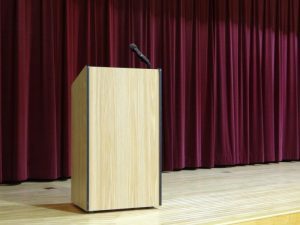 rowds of hundreds of people. I’ve run intensive writing workshops. I’ve been a writer-in-residence. I’ve been on panels, I’ve chaired debates, I’ve even done the MC thing and hosted glittering occasions. So far this year, I’ve spent nearly forty days away from my desk doing that other part of the job, at schools, libraries and festivals. In the beginning, I was uncertain about this part of the job, but I’ve grown to enjoy it. I’ve learned about presenting and honed my skills by the time honoured method of trial and error followed by reflection. I thought I’d share a few things that work for me.
rowds of hundreds of people. I’ve run intensive writing workshops. I’ve been a writer-in-residence. I’ve been on panels, I’ve chaired debates, I’ve even done the MC thing and hosted glittering occasions. So far this year, I’ve spent nearly forty days away from my desk doing that other part of the job, at schools, libraries and festivals. In the beginning, I was uncertain about this part of the job, but I’ve grown to enjoy it. I’ve learned about presenting and honed my skills by the time honoured method of trial and error followed by reflection. I thought I’d share a few things that work for me.
Introduce yourself. Part of the success of your presentation hinges on your credibility, so you need to establish this straight away. Even if you get an introduction, it’s worth spending a bit of time expanding on it, establishing why the audience should bother listening to you. You have some expertise, but tell the audience what it is!
Outline the presentation. This is a simple way of connecting with the audience. Let them know, broadly, what you’re going to cover. Let them know that there will be time for questions at end – or that you’re happy to take questions along the way. Tell them at the beginning that you’re going to cover the Top 5 Ways to Write a Detective Novel (and then tick them off along the way). Tell them that you’ll spend time on the Life of a Writer, then you’ll read an excerpt from your latest book, and at the end you’ll show them something from your Work in Progress. These signposts help your audience’s expectations, and get them ready for your presentation.
Engage. Easier said than done, of course, but try to connect with the audience near the beginning of your talk. Some suggestions: tell a short anecdote about your school days or your reading; tell how you got to the venue (a funny thing happened to me on the way …); ask a leading question that most of them will answer in the affirmative (‘How many of you saw [insert name of latest popular movie here]?); thank them for having you as a speaker – because it’s important market research for you …
Keep an eye on the audience. Try to judge from their expressions and posture how your talk is going. Speed it up, if necessary. Slow down and explain more if they’re looking puzzled.
Audio visual is helpful, but not to be relied on. No matter how well you’ve prepared your PowerPoint or images of book covers, there’s no guarantee it will work on the equipment at whatever venue you’ve arrive at. I have multimedia presentations but I use them very judiciously, usually at places I’ve been before. If I take them to an untried venue, I arrive early and I have a complete alternative, low-tech presentation ready to go, just in case.
Mention your website at the end, and it can be worth mentioning if you have a Facebook and Twitter presence.
As you finish thank the audience and repeat your name. It never hurts.
I enjoy the talking side of the writing job. It’s refreshing, challenging and it gives me a chance to meet my audience face to face – or my potential audience, anyway.
July 18, 2016
Reading, You’re Doing it Wrong
June 30, 2016
Alternative History
I’ve nominated a bunch of top Alternative History books here. But how does one go about writing in this challenging, but alluring, sub-genre?
Alternative Histories are where the writer changes something in our past and imagines what difference it would make t0 the now divergent timeline. For example, because of the gold rush, Australia in the 1880s was the richest country in the world. But the gold ran out. What if it didn’t? What if today Australia was the richest, most powerful country in the world, dominating politically, economically, technologically, and in the media? What sort of a world would it be?
It’s like dropping a stone into a pond and watching the ripples spread. With Alternative Histories, the longer ago the event was, the further the ripples spread and the more impact they have. Imagine, for instance, if Cleopatra’s navy had defeated the Romans at the Battle of Actium in 31 BC? We could be living in a world where Egypt is the superpower! What would living in an Egyptian world be like?
A good Alternative History looks at the implications of a historical change, but without sacrificing narrative and character. In fact, the changed circumstances can provide a fertile ground for exploring such aspects of story. How would a person behave in a world where the Reformation and Enlightenment didn’t happen, and where religious conformity is paramount? What would be the large-scale, society wide differences? What would be the more intimate, personal differences? In such, narrative grows.
Here are a few scenarios for you to play around with. What would today’s world be like if these changes had happened?
The east coast of Australia isn’t settled by the British. It’s settled/invaded by the French. Or Chinese. Or a variety of settlers/invaders.
Early in European settlement, a treaty was signed with the indigenous people.
A major Australian political or social figure was assassinated.
Massive Saudi sized oilfields are discovered in Central Australia.
Rabbits weren’t liberated near Geelong in 1859.
Have fun!
Bonus: here are a few more top notch Alternative History books. Click on the covers for Wikipedia descriptions.
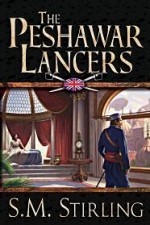
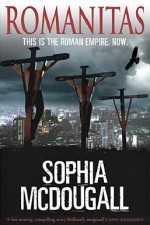
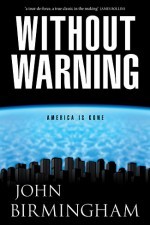
Wikipedia descriptions here: The Peshawar Lancers, Romanitas, Without Warning.
Bonus bonus: Alternative History or Alternate History? Both abound out there in netland, but I’ve gone with Alternative as, strictly, Alternate is used to describe two things taking turn about. Alternative History suggests more than two options, which I like.
June 16, 2016
5 Things I’ve Learned About Writing
My first novel was published in 1996. I was publishing short stories for four or five years before that, which means that I’ve been in the writing game for about twenty-five years. Time to reflect, perhaps, and this is what I came up with.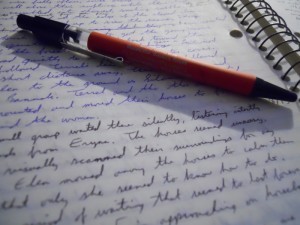
It’s useful if writers can talk
There is no magic formula
The gap between readers and writers is narrower than ever
Publishing is a business
The future is uncertain.
May 27, 2016
Ten Steampunk Novels I Haven’t Had a Chance to Write Yet
Force 10 from Westminster
The Disraeli Identity
Mary Shelley, Princess of Power
Gilbert and Sullivan and International Domination
Have Pith Helmet, Will Travel
The Revenge of the Colonies
Dirigibles, Digging Machines and Great Big Tanks
The Tea-time Ultimatum
Giant Cats Destroy London via the Underground (some work needed on that one)
Manners, Morals and the Exploitation of the Working Class
May 9, 2016
Four Important Lessons I’ve Learned from Fairy Tales
Lesson 1: Never Trust a Wolf.
People like David Attenborough would have you believe that wolves are harmless creatures, wonderful examples of nature at its finest – strong, noble, dignified. Well, he’s wrong. Fairy Tales have taught me that wolves are evil, nasty and cunning beasts who will stop at nothing to devour you whole. Not only will they give you false directions while you’re wandering in the woods, they will even dress up in women’s clothes in order to deceive you. If there isn’t a brave woodcutter nearby, you’re history.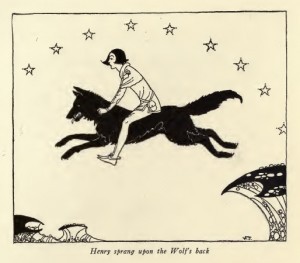
And, needless to say, you don’t want to be a harmless old grandmother when a wolf needs your nightie… According to fairy tales, senior citizens the world over must be shaking in their beds dreading the knock that signals the wolf at the door. Fairy tales show us again and again the sheer cunning of these canines as they manage to get inside and then, it’s goodnight Granny.
And that’s not to mention the plight of those who choose to build their houses out of straw or sticks … Fairy tales demonstrate over and over that these harmless home dwellers are persecuted not just by an ordinary wolf, but by a Big Bad Wolf. And why? Is it just because they construct their houses out of substandard building materials? Is it because they don’t have the necessary council planning permits? No. It’s simply because those inside these flimsy houses taste so good, especially roasted in a nice hot oven and served with plenty of apple sauce and crackling …
But I digress. Fairy tales have taught me: never trust a wolf.
Lesson 2: Learn to tell the difference between a wolf and your granny.
It might sound obvious, but this may be a vital survival step one day.
Lesson 3: Names are important.
Fairy tales showed me just how important names really are. For instance, if a character’s name happens to be something like Rumplestiltskin, you can bet your bottom dollar that he’s not going to be the romantic hero played by Leonardo di Caprio in a soon to be released big budget motion picture based on the fairy tale of the same name. Or then again, he might, depending on what you think of Leonardo di Caprio. Whatever, a name like Rumplestiltskin would be like someone today calling their baby SnortyBottomFartyBreath and expecting them to grow up a well adjusted and rounded human being.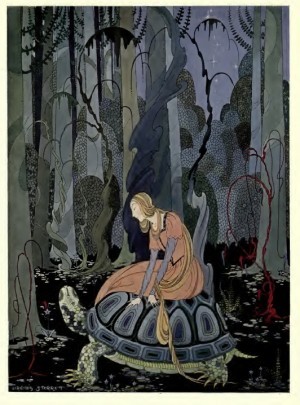
In fairy tales if your name is Jack, forget about having a dull life. I feel sorry for those males in fairy tales who happened to be called Jack, and all they wanted was to have a nice quiet life and grow up and become an accountant. Fat chance. Every Jack in a fairy tale is destined to become a Giant Killer, or to Be Nimble, or to grow enormous bean stalks and steal treasure, or to be Jack Frost, Jack Be Nimble or one half of Jack and Jill.
Let’s face it. If you’re a Jack in a fairy tale, you’re going to wind up an action hero whether you like it or not. When there’s Careers Counselling at Fairy Tale School, they don’t even bother with Jacks. They’re just pointed at the door marked Danger, Fame and Fortune and that’s that. If you’re a Jack, don’t even think about doing a traineeship at Target. Jack’s are glory bound, no questions asked.
And you have to be lucky with names in fairy tales, too. Look at Snow White and Rose Red. A bit unimaginative, don’t you think? It’s like calling your dog Mud Brown. But anyway I’m glad they didn’t have any younger brothers and sisters. What would they have ended up as? Sky Blue? Tree Green? Butter Yellow? Blush Pink? They’d start to sound like they should be in a paint colour chart not a fairy tale.
Whatever, Fairy Tales have shown me that names are important.
Lesson 4. Take Care of Your Feet.
You never know. They could be your ticket to marrying the Prince and living happily ever after, which sounds like a pretty good gig if you can get it, as long as he allows you your personal space with plenty of room to grow as a human being.
A note: the glorious illustrations above are by Virginia Frances Sterrett who died tragically young and really deserves to be better known.
April 15, 2016
TIME TRAVEL IS ESSENTIAL TO OUR WAY OF LIFE
Occasionally, one hears pundits and savants assert that Time Travel is dangerous. Moreover, the same gurus even go on to aver that the very idea of Time Travel is fraught with peril.
Nothing could be further from the truth, which is that Time Travel is essential to our way of life.
As is my wont, I went looking for a pithy quote to launch this searing exploration of temporal matters.
I considered Stephen Hawking. No. I thought about Einstein. No. I wanted the best, the most thoughtful, the most penetrating intellect on my side. So I chose the esteemed Writer and Philosopher Mr William Shatner.
He declared: ‘I find the whole time travel question very unsettling if you take it to its logical extension. I think it might eventually be possible, but then what happens?’
And if the words of the man who played the immortal TJ Hooker aren’t enough for you, I have a case of my own to prosecute.
Books, movies, TV – can you think of a time when Time Travel has ever turned out well? To writers, Time Travel can safely be put in the basket of items to insert when you need to have everything go horribly wrong. Time Travel is a mess. Time Travel is dangerous. Time Travel is a disaster.
This might sound like a strange way to assert that Time Travel is something that should be undertaken as often as possible, but bear with me. My argument is subtle, it is complex, it is multi-faceted, but then again, I’m sure you can keep up. I have nothing but the highest regard for my readers.
Why everyone should undertake Time Travel is because without it, writers everywhere would be driven to despair. Think about it, it’s such a rich and fertile area for plot thickeners. Take Time Travel out of Wells’ The Time Machine and you pretty much have a story about a man who doesn’t go anywhere. Take Time Travel out of The Edge of Tomorrow and Tom Cruise would miss out on his only good role in the last ten years. Take Time Travel out of the Star Trek: Enterprise TV series and you have a program that would be pretty empty and probably not worth making.
Scratch that last example. Dammit.
I’m asking you to think of the writers. Those poor, misunderstood, exploited – did I mention poor? – souls who do their best to bring a little happiness into your lives. Do you really want to deprive them of a tiny morsel which could brighten their blighted lives? Do you want them to do without something that could make their twisted, deprived and possibly soulless existences a little easier?
I thought not.
If there is no Time Travel, all our lives – all our lives, I tell you – would be immeasurably poorer. We would:
have no Morlocks or Eloi
have no special De Loreans
have no bootstrapped zombies
no dinosaurs stepping on butterflies leading to awful spelling mistakes
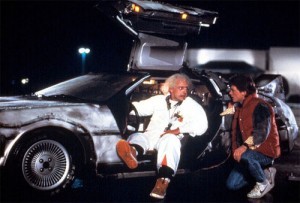
have no excellent adventure for Bill and Ted
Happy ending at the end of Christopher Reeves Superman 1
have no Doomsday Book, no Anubis Gates and no Time Traveller’s Wife
have no Outlander, no Life on Mars, no Time Tunnel.
A world without such creations would be a much lesser world indeed.
To put it another way, we’re all time travellers – it’s just that we’re doing it very, very slowly. It takes us one day to travel one day into the future. And I, for one, will have no truck with anyone who wishes to assert the opposite and to deny our very way of life.

